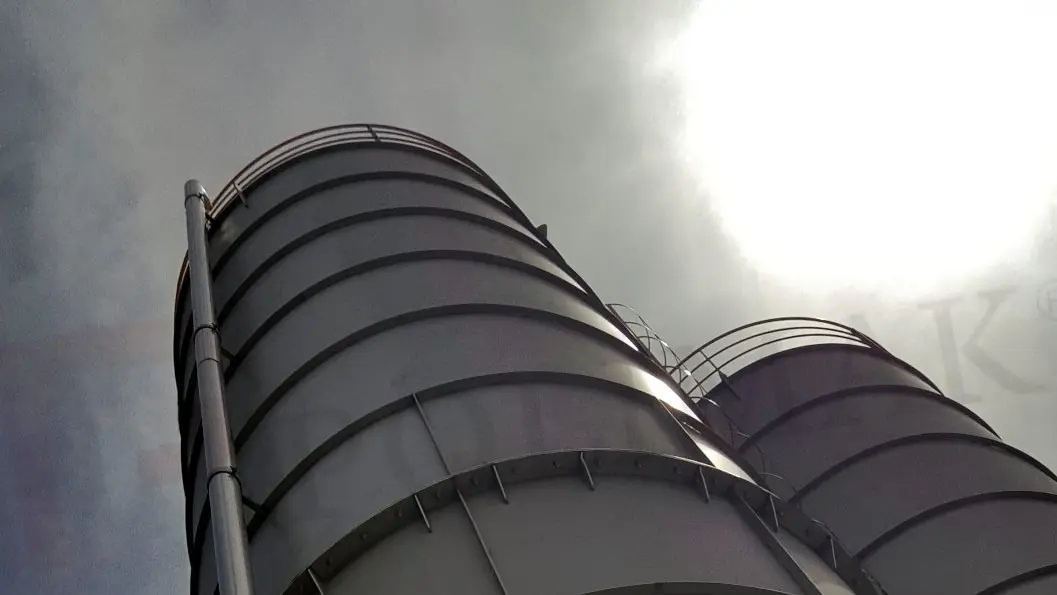Dust-Free Port Operations
Dust-free port operations are essential for ensuring environmental compliance, workplace safety, and product integrity, especially in bulk cargo terminals that handle fine or powdered materials such as cement, fertilizers, minerals, grains, and chemicals.
By integrating dust control technologies throughout the material handling chain, from unloading and transfer to storage and containerization, ports can minimize air pollution, protect worker health, and avoid material loss. These systems are particularly critical in intermodal logistics where cargo is transferred between ship, train, and truck.

How the System Operates
• Enclosed Conveying Systems: Bulk materials are transferred using fully enclosed conveyors such as covered belt conveyors, pneumatic systems, or screw conveyors, minimizing dust escape during transit within the port.
• Sealed Transfer Points: All transition points between equipment (for example, from hopper to conveyor) are equipped with dust-tight seals, flexible connectors, or telescopic spouts to prevent fugitive dust emissions.
• Dust Extraction & Filtration: At high-risk locations like ship unloaders, hopper intakes, or container loading stations, dust collection systems extract airborne particles and filter them using bag filters, cartridge filters, or cyclones.
• Real-Time Air Monitoring: Modern systems include particulate sensors that continuously monitor air quality in critical zones, triggering alerts or system adjustments when dust thresholds are approached.

Key Components
• Enclosed Conveyors: Designed for high-volume transfer with minimal air exchange, including covered belts, enclosed screws, and vacuum conveyors.
• Dust Collection Systems: These systems are installed at ship unloaders, transfer towers, and container filling stations, and are equipped with HEPA filters or pulse-jet cleaning systems.
• Telescopic Loading Chutes: Used during container or truck loading, loading chutes extend into the container and seal the opening to reduce dust emissions.
• Negative Pressure Booths & Hoods: Provide localized airflow control, pulling dust away from operators and surrounding areas.
• Automated Monitoring & Control Panels: Track system performance, air quality data, and equipment health, allowing operators to respond to dust spikes quickly.

Key Advantages and Benefits
• Environmental Compliance: Meets stringent local and international environmental regulations (such as MARPOL, ISO 14001) on air emissions and pollution control.
• Health & Safety Improvement: Minimizes respiratory risks and long-term exposure for workers handling dusty materials.
• Material Loss Reduction: Prevents fine material from being lost to the environment, improving yield and operational efficiency.
• Cleaner Operations: Ports that maintain visible cleanliness and control emissions effectively help create a healthier environment for workers and surrounding communities.
• Compatibility with Intermodal Systems: Dust-free technologies are integrated seamlessly across ship unloading, rail loading, and truck dispatch operations.

Industry-Specific Examples
• Cement Terminals: Cement is unloaded using enclosed screw conveyors and transferred to silos by sealed pipelines. Telescopic loading chutes with integrated dust extraction systems are used for truck and container loading. This mechanism help control dust and maintain environmental safety.
• Grain Ports: Grain handling systems depend on belt conveyors, and airlocks at container loading stations. These systems prevent dust explosions and protect grain quality. They also ensure compliance with food safety standards.
• Fertilizer Handling: Dust control systems use corrosion-resistant materials due to the chemical nature of fertilizers. Equipment includes dust hoods and bag filters to contain airborne particles. This ensures clean and safe transfer from ship to truck.
• Mineral Export Operations: Fine minerals such as limestone or gypsum are transferred through fully enclosed pneumatic conveying systems. Real-time dust sensors monitor air quality to ensure regulatory compliance. These measures prevent contamination of surrounding operations.